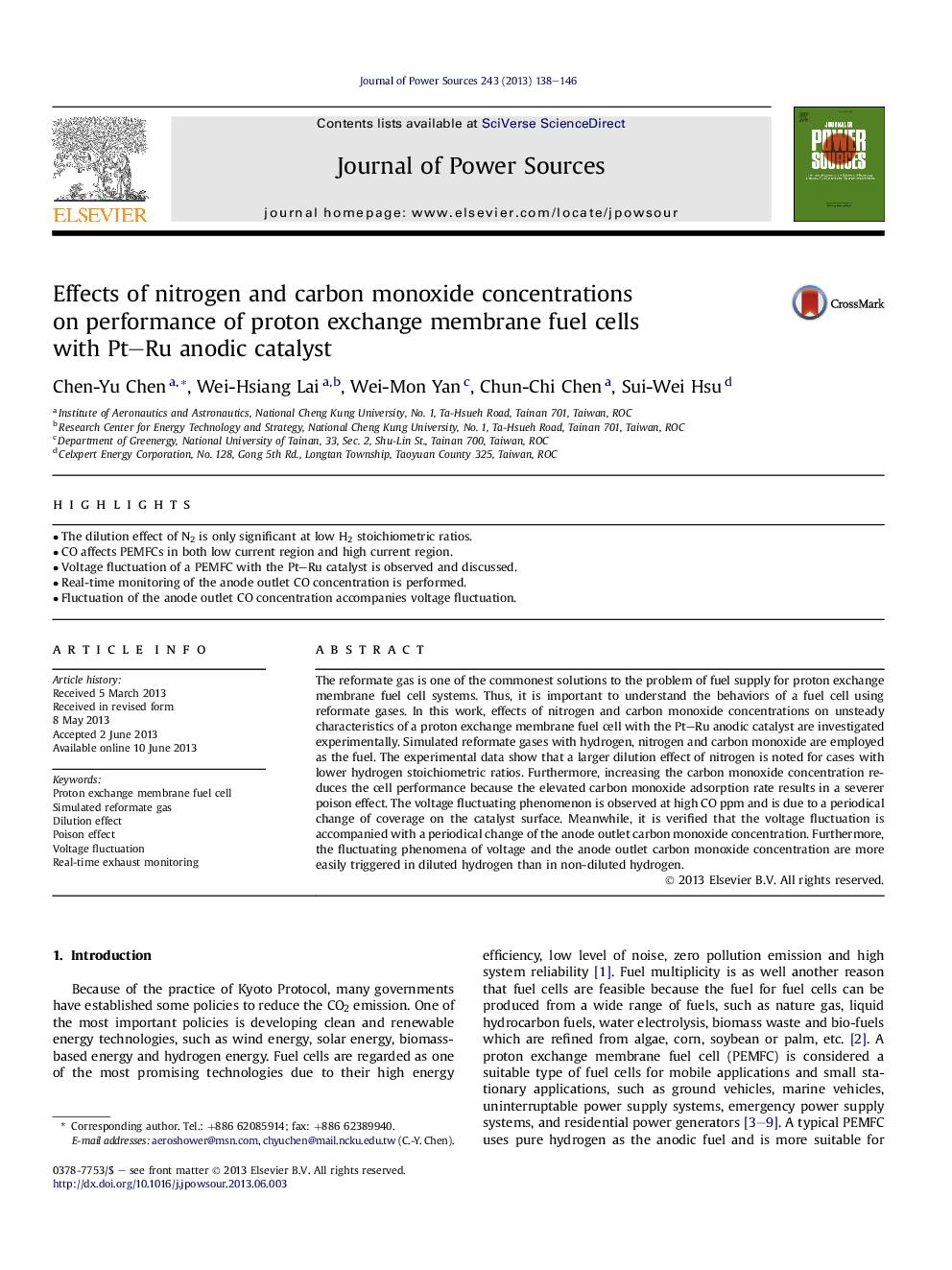| Article ID | Journal | Published Year | Pages | File Type |
|---|---|---|---|---|
| 7739303 | Journal of Power Sources | 2013 | 9 Pages |
Abstract
The reformate gas is one of the commonest solutions to the problem of fuel supply for proton exchange membrane fuel cell systems. Thus, it is important to understand the behaviors of a fuel cell using reformate gases. In this work, effects of nitrogen and carbon monoxide concentrations on unsteady characteristics of a proton exchange membrane fuel cell with the Pt-Ru anodic catalyst are investigated experimentally. Simulated reformate gases with hydrogen, nitrogen and carbon monoxide are employed as the fuel. The experimental data show that a larger dilution effect of nitrogen is noted for cases with lower hydrogen stoichiometric ratios. Furthermore, increasing the carbon monoxide concentration reduces the cell performance because the elevated carbon monoxide adsorption rate results in a severer poison effect. The voltage fluctuating phenomenon is observed at high CO ppm and is due to a periodical change of coverage on the catalyst surface. Meanwhile, it is verified that the voltage fluctuation is accompanied with a periodical change of the anode outlet carbon monoxide concentration. Furthermore, the fluctuating phenomena of voltage and the anode outlet carbon monoxide concentration are more easily triggered in diluted hydrogen than in non-diluted hydrogen.
Related Topics
Physical Sciences and Engineering
Chemistry
Electrochemistry
Authors
Chen-Yu Chen, Wei-Hsiang Lai, Wei-Mon Yan, Chun-Chi Chen, Sui-Wei Hsu,
